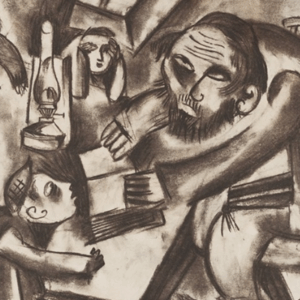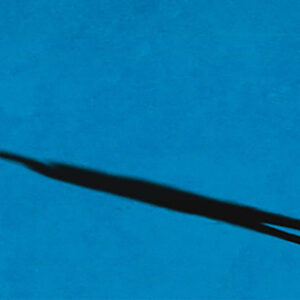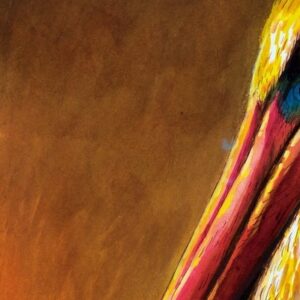
Every Day is Earth Day: 365 Books to Start Your Climate Change Library
Part Three: Fiction and Poetry
The idea of a single day devoted to the earth is absurd. In the 49 years since the first Earth Day was celebrated, human civilization—checked by neither morality nor policy—has wrecked devastation upon the planet, increasing with each passing year of excess and inaction the likelihood that coming generations will live in a world unrecognizable to Senator Gaylord Nelson, who first conceived of the day as an environmental teach-in on April 22, 1970. But if there is any hope in righting this awful course, we need to think of every day as Earth Day.
With that in mind we have come up with the beginnings of a climate change library, 365 books that show us where we’ve come from, where we’re at now, how we might survive this crisis, and how we might cope if we don’t. With contributions from the likes of Richard Powers, Rebecca Solnit, Elizabeth Rush, Aminatta Forna, Maja Lunde, Aimee Nezhukumatathil, Francesca Angiolillo, Stephen Sparks, Amy Brady, Jean-Baptiste del Amo, and many more, this collection is neither exhaustive nor fixed, and with the help of readers and writers alike, we hope to add to it in the coming months (and years, if we can). Divided broadly—and subjectively!—into four sections, we continue today with novels and poetry collections that engage with the natural world, its beauty, its severity, and, of course, the calamities to come. (Part one, The Classics, and part two, The Science, are here.)
Featured art from Landscape Painting Now, edited by Todd Bradway, courtesy DAP.
__________________________________
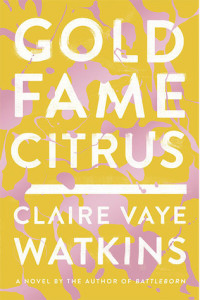
Claire Vaye Watkins, Gold Fame Citrus
Watkins’ mesmerizing vision of a West without water takes dystopian near-future fiction one step further into evolutionary science, with an embedded field guide to the fauna and flora that have adapted to survive in an imaginative world where massive sand dunes have swallowed the Rocky Mountains. But the heart of the story is a woman’s search for family and safe haven, and the near impossibility of both in this radically changed climate.
 W. S. Merwin, The Rain in the Trees
W. S. Merwin, The Rain in the Trees
When it was published 30 years ago, The Rain in the Trees marked a decided shift in W. S. Merwin’s poetry, as he moved from the growing global ecological awareness that had erupted previously in his aesthetically groundbreaking collection The Lice, to focus more specifically on the fragile ecosystems of the Hawaiian islands. A book of renewal shadowed by reclaimed personal love and the geographies of childhood, during the writing of these poems, Merwin had also started a soil recovery project, ultimately transforming 20 acres of designated wasteland into one of the most diverse palm forests on the planet. The poems ring with the possibility and hope of transformation, as if they themselves are growing organically in tune with the landscape around them. His forest and his writings sustained and influenced each other—and arose from the same ground. “When the words had all had been used/ for other things/ we saw the first day begin . . .”
–Michael Wiegers
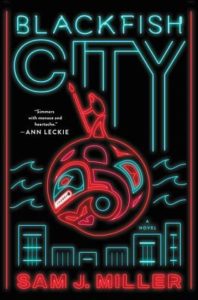
Sam J. Miller, Blackfish City
The last great human city on Earth is in the ice-free Arctic Circle in Miller’s novel, but like the great cities of today’s world, entrenched inequality guarantees privileges for only a few. Enter a woman who may have the power to disrupt this stratified society, and the drowned world seems bound for an even greater change.
 Arthur Sze, Archipelago
Arthur Sze, Archipelago
Arthur Sze’s ground-shifting collection, Archipelago, is a spiritual and imaginative meditation on how the human mind engages the planet. In Sze’s poems, nature and the imagination are the same thing—there is no separation. A mushroom hunt in the forests of the Southwest is juxtaposed against the atomic clouds being dreamed of at Los Alamos; a ritual vessel used in human sacrifice glows incarnadine like the trail of blood poured into ocean water in order to lure sharks toward awaiting tourists. The world goes on with its necessarily connected violences and beauty. Using the metaphor of the Zen garden at Ryoanji, wherein the viewer cannot see all the islands set in a larger sea of sand, Sze’s poems reveal the interconnectedness that sustains all life, be it human or other, and much as with Wallace Stevens’s blackbird, reveals that there is no single way for capturing what surrounds us.
–Michael Wiegers
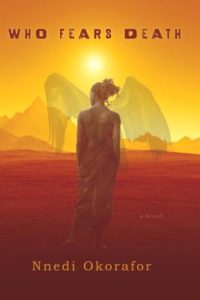
Nnedi Okorafor, Who Fears Death
A vivid reminder that the people most impacted by climate change are often the most vulnerable, with the least access to political power, Okorafor’s novel set in post-apocalypse Africa is a gorgeous mix of politics and poetry, cli-fi and fantasy. The title character, Onyesonwu, whose name means “Who Fears Death,” comes into her own powers in an annihilated world, while seeking to solve the mystery of who, or what, is trying to destroy her. George R.R. Martin, no slouch at detailed world-building himself, optioned this novel for an HBO series.
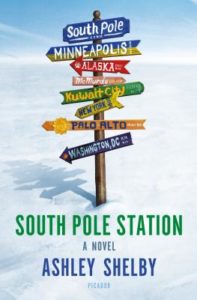
Ashley Shelby, South Pole Station
Deeply funny and wonderfully nerdy, this debut novel by an environmental journalist about climate scientists in the Antarctic reinforces that there’s no hope without science—and no more stark reminder of our own humanity than a landscape so hostile to human life, one that’s nevertheless being irreversibly damaged by our influence.
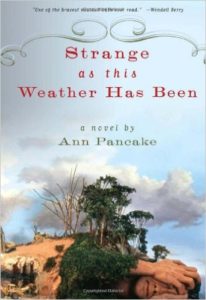
Ann Pancake, Strange As This Weather Has Been
Set in a West Virginia town in the midst of a coal boom, Ann Pancake’s Strange as This Weather Has Been introduces a family plagued by poverty and by the effects of the mountaintop removal strip mining that’s destroying the land around them. Pancake, who is from West Virginia, writes with stunning authenticity, drawing from conversations and interviews with people living through mountaintop removal mining. Place is a major character in this novel; the richness of detail and the characters’ history with the land reveals why it’s so hard for them to leave, even when the jobs begin to disappear and threats loom everywhere, from within the coal miners’ lungs to the flooding of toxic black water. As the character Lace says in the novel: “Stay in their way—that’s the only language they can hear. We are from here, it says. This is our place, it says. Listen here, it says. We exist.”
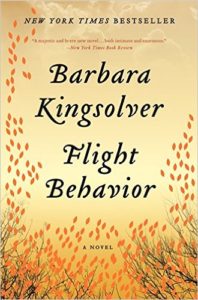
Barbara Kingsolver, Flight Behavior
In this novel, Barbara Kingsolver skillfully blends science and story, addressing climate change through the eyes of a woman whose small-town world is broken wide open by a bizarre act of nature. Dellarobia Turnbow, married at 17 because of a pregnancy in which she lost the baby, is a decade later still married, tied to her two young children and her husband’s family farm. She escapes emotionally through wild crushes on various men—and one day, planning to go through with an affair, she heads into the mountains for the rendezvous, only to discover a vast population of monarch butterflies. Their arrival, to the locals, signifies a miracle of God; to the scientific community, it’s a sign of ecological disaster. Dellarobia is drawn into the wider world of the monarchs and the global implications for their sudden and unexplained arrival in her town. With both page-turning tension and great empathy, Kingsolver portrays the implications of a changing planet and its reverberations upon an entire family.
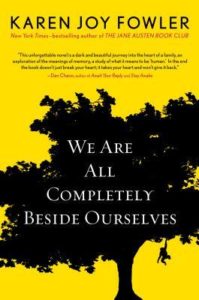
Karen Joy Fowler, We Are All Completely Beside Ourselves
We Are All Completely Beside Ourselves is one of those books that makes the rest of the world disappear, while at the same time reminding us all too well of the world we come from and its sometime cruelty. The novel’s narrator, Rosemary Cooke, is clever and witty, yet underneath her wry tone is a haunting loneliness that stems from the loss of her sister, Fern. Exquisite and heartbreaking, this novel closes the distance that is often placed between human and non-human animals, proving that the anguish of loss transcends species. While a searing portrait of the plight of animals, both past and present, ultimately Fowler’s novel is one of family, the aftermath of loss, and the incredible bonds that unite all creatures.
 Peter Matthiessen, Shadow Country
Peter Matthiessen, Shadow Country
A “semi-fictional” masterpiece of frontier Florida; Everglades weirdness from one of the best writers of American wilderness to ever grace our lands.
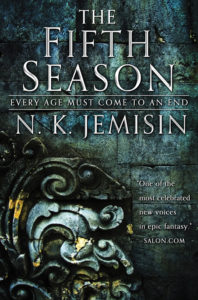 N. K. Jemisin, The Fifth Season
N. K. Jemisin, The Fifth Season
A speculative novel in which seasons are wild and unpredictable, humans have adapted in strange ways, and you find out what (might) happen when the Earth begins to fight back against what we’ve done to it. The first in a very valuable and thrilling trilogy.
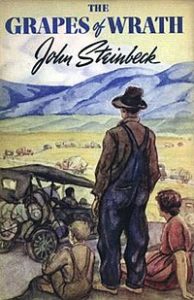 John Steinbeck, The Grapes of Wrath
John Steinbeck, The Grapes of Wrath
As I’ve been running in the wheat fields of eastern Washington while on book tour these last few days, I’ve noticed the immensity of what we’re doing to the land. We farm with huge machines, spray tons of toxic chemicals and burn countless gallons of fossil fuels—all this to grow miles upon miles annual grass. Struck as I am by the ludicrousness of that, I want to direct readers to Steinbeck’s timeless account of what happens when our bad treatment of the planet comes home to roost.
–Bryce Andrews
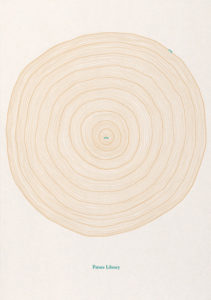 Katie Paterson, The Future Library
Katie Paterson, The Future Library
It is difficult to say how bad things will be in 2114 when human beings are finally allowed a peak at The Future Library. Who can say, really, if the thousand trees planted in Norway will even survive long enough to comprise the paper for a hundred specially printed books. Conceived by artist Katie Paterson, contributors to the library so far include Margaret Atwood, David Mitchell, Sjon, Elif Shafak and Han Kang, whose new work no living person will ever read.
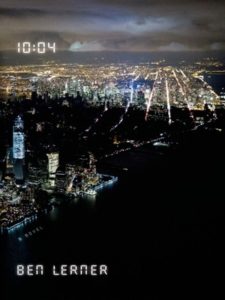 Ben Lerner, 10:04
Ben Lerner, 10:04
In his second novel, Ben Lerner ekes thoughtful hilarity and despair out of the confluence of social unrest and superstorms that descend on New York City in the mid-2010s. Another work of autofiction, the novel stars “Ben Lerner,” a poet and a teacher, who considers the possibility of fatherhood in a world increasingly unfit for human habitation. He captures here perhaps better than most news stories the fear and wonder New York experienced in the days leading up to—and just after—Superstorm Sandy hit.
–Amy Brady
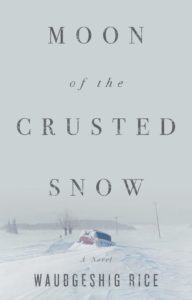 Waubgeshig Rice, Moon of the Crusted Snow
Waubgeshig Rice, Moon of the Crusted Snow
A chilling post-apocalyptic story set on a reservation in northern Ontario, where an Anishinaabe community struggles to survive without electricity, cell phones, and other warming conveniences—and where a refugee from the destroyed South appears at their borders. Read an excerpt here.
 J. G. Ballard, The Drowned World
J. G. Ballard, The Drowned World
Often called the grandfather of climate fiction, or “cli-fi,” J.G. Ballard gave rise to the genre with The Drowned World, his 1962 science-fiction juggernaut set in a post-apocalyptic future on an earth ravaged by climate change. With its gripping plot and believable characters, the book would set the standard for quality speculative fiction about a global problem that is anything but speculative.
–Amy Brady
 Thirii Myo Kyaw Myint, End of Peril, The End of Enmity, The End of Strife, A Haven
Thirii Myo Kyaw Myint, End of Peril, The End of Enmity, The End of Strife, A Haven
A gorgeous, lyrical novel in which a young woman escapes from her destroyed domed city—once climate controlled and perfectly genetically modified—into an unfamiliar, barren world, baby in tow.
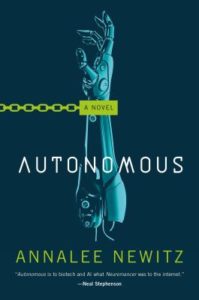
Annalee Newitz, Autonomous
Climate change is the just-barely-audible engine driving the technology, the economy, and the plot of Newitz’s novel, a page-turner that sweeps from a melted Arctic circle to a domed-in Las Vegas. The novel’s action tracks a woman’s race against time to beat the new Big Pharma to market with the antidote to the new drug of choice, a productivity enhancer that could accelerate humankind’s self-destruction.
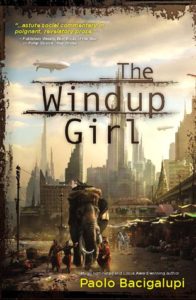 Paolo Bacigalupi, The Windup Girl
Paolo Bacigalupi, The Windup Girl
A beloved work of speculative fiction set in a global warming-ravaged 23rd-century Thailand. That is: not the future we want to see.
 John Lanchester, The Wall
John Lanchester, The Wall
Lanchester has never shied away from addressing large systemic problems in his work. The Wall is no different; it addresses climate change and how it leads to global conflict, rises in nationalism, and widespread suspicions of Others. Unlike a lot of climate fiction, however, The Wall is shot through with an air of hope. It’s a must-read for anyone who cares about climate change and in need of reminding that the human capacity for compassion is still quite large.
–Amy Brady
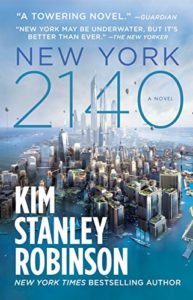 Kim Stanley Robinson, New York 2140
Kim Stanley Robinson, New York 2140
Kim Stanley Robinson might be one of our most prolific writers of science-fiction. He’s also a card-carrying member of the Communist Party and a big believer in human ingenuity—at least that’s what he suggests with New York 2140, a novel set in a Manhattan half drowned by sea-level rise. Despite its premise, the book is actually quite funny. It’s also a damning condemnation of unchecked capitalism and all the ways in which it feeds global warming.
–Amy Brady
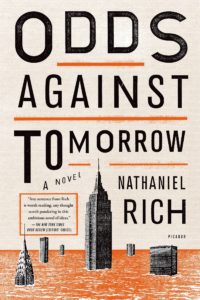 Nathaniel Rich, Odds Against Tomorrow
Nathaniel Rich, Odds Against Tomorrow
Another novel of an underwater New York City, this one featuring a disaster predictor and a canoe.
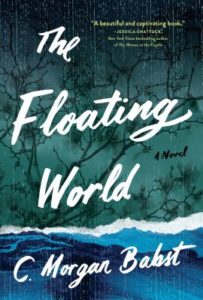
C. Morgan Babst, The Floating World
If Jesmyn Ward’s Salvage the Bones was the first great novel about Hurricane Katrina, with its tense, heartbreaking depiction of a pregnant teenager in the days before the storm, The Floating World is the next, in its powerful rendering of the city in the days after its devastation. In tracing the immediate aftereffects of Katrina on one multiracial family, the Boisdores, Babst proves anew that New Orleans is a city of indelible human stories—and, since Hurricane Katrina, also a potent, city-sized symbol of how climate change puts urban life at risk.
 Katie Ford, Colosseum
Katie Ford, Colosseum
Colosseum is an exacting collection of poems that bears witness, in the most intimate and metaphysical way, to the impacts of Katrina and all the other storms that are reshaping our coastal communities all around the country. Ford’s voice—singular, exacting, strong—rises above the wreckage to ask what remains and who will we become.
–Elizabeth Rush
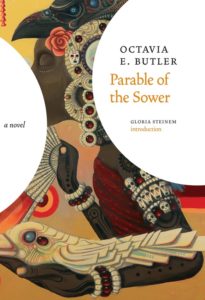 Octavia Butler, Parable of the Sower
Octavia Butler, Parable of the Sower
Unlike some of the other novels on this list, the year in which Butler imagined society would have crumbled because of climate change is distressingly near. Like, in the next decade near.
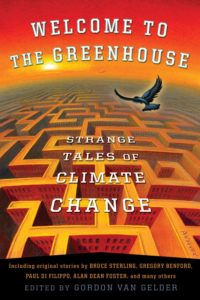 Gordon Van Gelder, ed., Welcome to the Greenhouse
Gordon Van Gelder, ed., Welcome to the Greenhouse
“There is a lot about global warming that we don’t know,” Elizabeth Kolbert writes in the preface to this 2011 collection of climate-themed SF.
As the planet heats up, almost certainly some regions will experience more intense droughts, but which regions, exactly, and how intense will those droughts be? Monsoon patterns will shift, and produce flooding, but which cities will be submerged? . . . The greatest unknown of all is, of course, how people, collectively, will respond. Will they be chastened? Genocidal? Or will they just muddle along, behind growing seawalls and shrinking coasts? Science—even social science—can’t answer questions like this, which is why we turn to science fiction. Welcome to the Greenhouse!
 Ursula K. Le Guin, The Lathe of Heaven
Ursula K. Le Guin, The Lathe of Heaven
The Lathe of Heaven elegantly folds climate change into a zany, at times psychedelic read, which somehow makes all of its apocalypses feel real—even the improbable, late-night movie ones. The wild plot twists are anchored by a real understanding of the landscape and ecology of Portland, Oregon—from a snow-free Mount Hood to Lloyd Center, both blanketed in endless rain. Lathe‘s existence proves that even in early 70s, when the topic of climate change was relatively obscure, and global concentration of carbon dioxide in the atmosphere was a demure 327 ppm, the facts were out there and available to anyone paying attention.
–H.R. Smith
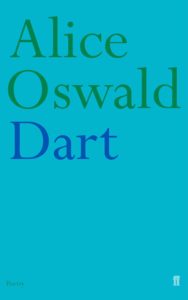 Alice Oswald, Dart
Alice Oswald, Dart
For this volume, a combination of poetry and prose, poet Alice Oswald spent years recording conversations with the people who live, play, and work on and around the River Dart in Devon: swimmers, canoeists, a ferryman, a sewage worker, a forester, and more. She uses these voices, as well as her own voice, myths, and magic, to tell the story of the river, and celebrate it from source to estuary.
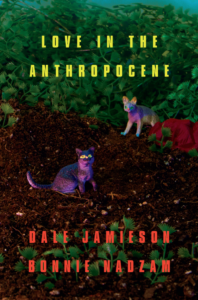 Bonnie Nadzam and Dale Jamieson, Love in the Anthropocene
Bonnie Nadzam and Dale Jamieson, Love in the Anthropocene
Love in the Anthropocene is a short story collection by a fiction writer and environmental philosopher. It goes deep into stories of relationships altered by nature and the lack of it, and it does this in a way that is a refreshing change from the way that science fiction can use climate change as a sort of apocalyptic window-dressing, without thinking through how it would change how humans actually live. The stories are written in a clean, spare style that is reminiscent of Golden Age sci-fi, along with that era’s tendency to work through potential futures almost as a thought exercise.
–H.R. Smith
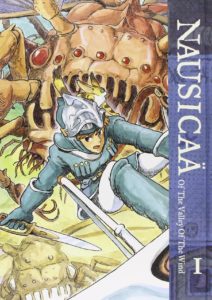 Hayao Miyazaki, Nausicaä of the Valley of the Wind
Hayao Miyazaki, Nausicaä of the Valley of the Wind
You may or may not have seen the anime movie, but the manga is where the story of Nausicaä—a princess in a post-apocalyptic landscape, dealing with yet another environmental crisis, not to mention war—began.
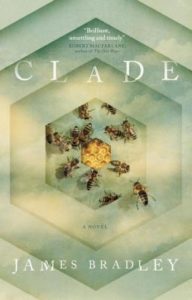
James Bradley, Clade
Like Richard Powers’s masterful The Overstory, James Bradley’s Clade is a cross-generational novel that examines the impact of time on our understanding of climate change. The natural world is changing all around us, both rapidly and yet also at the ungraspably slow pace of evolution itself. Bradley’s family drama is designed to show us that all of our human-scale problems are playing out on a planet-sized stage . . . and the stage is collapsing under our feet.
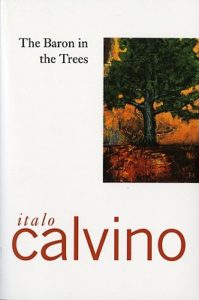 Italo Calvino, The Baron in the Trees
Italo Calvino, The Baron in the Trees
Whence fantasies about living forever in the trees if all the trees are gone, we ask you?
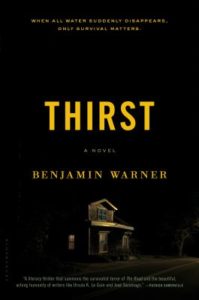
Benjamin Warner, Thirst
A mysterious disaster has somehow burned away all the water, and while waiting for news of what’s next—and what’s behind the water’s sudden disappearance—the residents of a suburban community are driven to formerly unthinkable compromises in order to survive. Tense and character-driven, this story is how Alfred Hitchcock might have approached climate change.
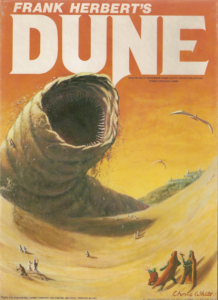 Frank Herbert, Dune
Frank Herbert, Dune
Still a behemoth of ecologically-oriented SF, set on a sand planet populated by enormous worms and a wildly resource known as spice, Dune is both a magnificent space opera and a warning about our home.
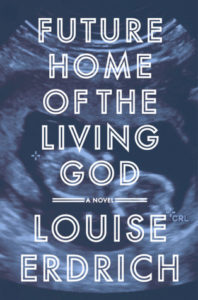
Louise Erdrich, Future Home of the Living God
American master Louise Erdrich’s most recent novel is an under-appreciated cli-fi page-turner. In a world in which seasons have all but disappeared and natural evolution has begun to run in reverse, a pregnant young woman finds herself on the run, finding uncertain sanctuary on the reservation where her birth family lives. It can’t be a coincidence that so much fiction about “Mother Earth” is also equally about motherhood, but in Erdrich’s hands the expected becomes wonderfully unexpected.
 Brenda Hillman, Extra Hidden Life, Among the Days
Brenda Hillman, Extra Hidden Life, Among the Days
Extra Hidden Life, Among the Days is a collection of poems that navigates the difficult question of what it means to inhabit the earth through a time of tremendous flux. Hillman is a most excellent traveling companion— idiosyncratic and insightful, always surprisingly unexpected—her turns of phrase have inspired me to protest, to laugh, to weep, to raise my cup in praise.
–Elizabeth Rush
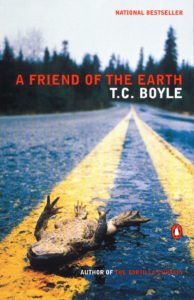 T. C. Boyle, A Friend of the Earth
T. C. Boyle, A Friend of the Earth
A novel set in 2025, a time in which the earth’s biodiversity is all but extinguished by climate change, and humans live on rice and chemicals for much too long, transfixed by their screens.
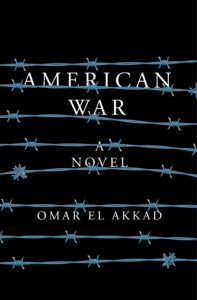 Omar El Akkad, American War
Omar El Akkad, American War
American War is so well observed and beautifully written you’d never guess its El Akkad’s novel debut. The novelist had worked as a journalist for a decade prior, and it shows. His descriptions of people and place and how social systems operate could only be the work of someone who spent years observing such things closely and carefully in real life. Set in the near future during the outbreak of America’s second Civil War, American War is a powerful story about climate and conflict that resonates more strongly than ever in an age of increasing social divisions and arguments over borders.
–Amy Brady
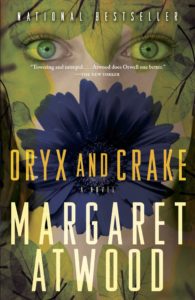 Margaret Atwood, Oryx and Crake
Margaret Atwood, Oryx and Crake
When Margaret Atwood has visions of the future, it’s best to take her seriously. This is the first book in her climate-conscious trilogy, which also includes The Year of the Flood and MaddAddam.
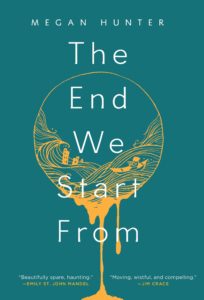 Megan Hunter, The End We Start From
Megan Hunter, The End We Start From
This glorious novel celebrates motherhood as it grieves for a dying planet. Set in a flooded London, the books tells the tale of a woman who, amid city-wide chaos, gives birth to a child. Days later mom and baby are forced to evacuate their home. What follows is a tale of survival, motherhood, and the power that comes from women helping women. This is Hunter’s debut, but you’d never know it. Every page is a stunner.
–Amy Brady
 Dan Gerber, Sailing through Cassiopeia
Dan Gerber, Sailing through Cassiopeia
Layered meditations on the world—natural and otherwise—and our place in it.
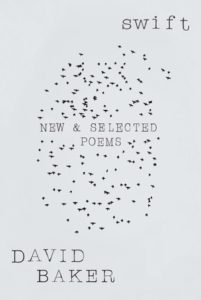 David Baker, Swift
David Baker, Swift
“David Baker is a poet of American anti-pastoral,” Dan Chiasson observed in The New Yorker. “His work evinces the moral courage of keeping still in the landscape: in our era of climate change, poetry’s mandate to measure the rhythms of the year has become a valuable form of witness. Baker’s reports from the interior leave in all the encroachments that threaten it.” Bearing witness to both glorious world and impending doom may be every poet’s current brief.
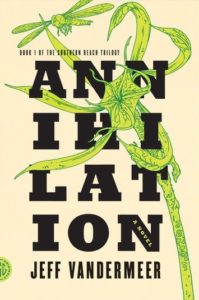 Jeff Vandermeer, Annihilation
Jeff Vandermeer, Annihilation
Annihilation is the first book in VanderMeer’s Southern Reach Trilogy, a series about a team of four women scientists who explore Area X, a swath of pristine wilderness cordoned off from the world by a curtain of rainbow-colored slick. The book brims with anxieties of all sorts—marital, professional, existential. It’s also gorgeously written and contains some of the most unsettling imagery of the natural world in recent memory.
–Amy Brady
 Pitchaya Sudbanthad, Bangkok Wakes to Rain
Pitchaya Sudbanthad, Bangkok Wakes to Rain
Sudbanthad’s debut novel takes readers from 19th-century Vietnam through the 20th century and into a future “New Krungthep,” a land flooded by sea waters and filled with tourists nostalgic for the past. This gorgeous novel is a timely meditation on memory and loss in an age of climate change.
–Amy Brady
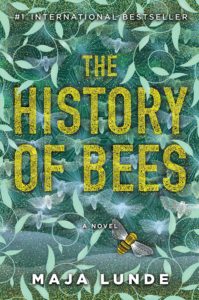 Maja Lunde, The History of Bees
Maja Lunde, The History of Bees
A spellbinding novel that follows the lives of three generations of beekeepers as they grapple with a changing world—and the charges that could save it.
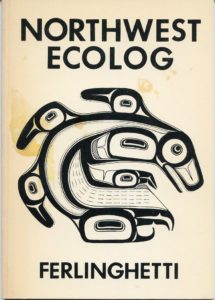 Lawrence Ferlinghetti, Northwest Ecolog
Lawrence Ferlinghetti, Northwest Ecolog
of reality
inside the ultimate computer
which is nature… In a dream within a dream I dreamt a dream
about the earth heating up & dying out
in the famous Greenhouse Effect
under its canopy of Carbon Dioxide.
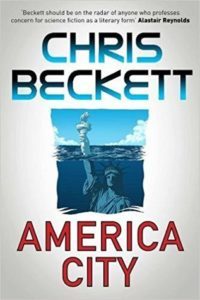 Chris Beckett, America City
Chris Beckett, America City
In America City by Arthur C. Clarke-award-winner Chris Beckett, a 22nd-century United States called “GuardianAmerica” attempts to remain unified in the face of devastating climate change realities. One Senator Slaymaker from Washington State runs for president on the unification platform, and we learn more through his British-born PR, Holly Peacock. As powerful hurricanes devastate the east coast, southern towns have less and less water, forcing refugees to head north—where they meet with little welcome, and threats of “frontier control.” As Slaymaker vows to heal the new north-south divide, Holly finds a way. Of course, it’s a dirty way. And it has consequences. Big, big consequences. As she attempts to manipulate the near-instantaneous “whispernet” to keep things under control, she and her boss and the others around them have to decide if action versus passivity is always the best choice. Unsettling and important.
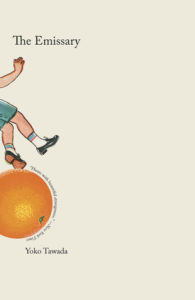 Yoko Tawada, tr. Margaret Mitsutani, The Emissary
Yoko Tawada, tr. Margaret Mitsutani, The Emissary
A brilliant, award-winning novel that imagines a Japan that has sealed itself off from the rest of the world after an unspecified catastrophe that has killed all wildlife except for the spiders and the crows—and language and children are both dissipating at alarming speeds. The loveliest work of eco-terror you are likely to read.
 Jeanette Winterson, The Stone Gods
Jeanette Winterson, The Stone Gods
A self-referential, postmodern imagining of our future, brutally tech-centric lives—and a warning to learn from past mistakes instead of just repeating them, and repeating them, and repeating them.
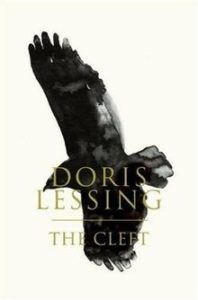 Doris Lessing, The Story of General Dann and Mara’s Daughter, Griot and the Snow Dog
Doris Lessing, The Story of General Dann and Mara’s Daughter, Griot and the Snow Dog
 Marcel Theroux, Far North
Marcel Theroux, Far North
Another haunting vision of the world post global warming-induced collapse, in which cities are terrifying, women must hide, and it is cold. Very cold.
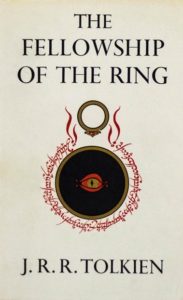 J.R.R. Tolkien, The Lord of the Rings
J.R.R. Tolkien, The Lord of the Rings
The book that inspired a generation full of pot smoking tree-huggers, and inspired at least one reader who will not be named to sit in the forest for an hour trying to get a tree to respond to her questions.
 Mary Oliver, American Primitive
Mary Oliver, American Primitive
You can open any volume by Mary Oliver and find on the page poems of great charm and poise. In “American Primitive,” though, winner of the Pulitzer, her still, beautiful poise is probably at its finest. In poems like “Lightning” and “First Snow” and “Egrets” it feels impossible that there’s a barrier between the poet, the page, what she describes, and us, her readers. The poems feel that eternal, as if they’ve always existed. “Vultures” begins, “Like large dark/lazy/butterflies they sweep over/the glades looking/for death.” The rich cinnamon of trees as they sap, the way the moon seems to float. The intelligent fury of how a bear watches. These poems are so full of such glorious information, they are walking advertisements for the rewards of paying attention to the earth’s variety of beauty.
–John Freeman
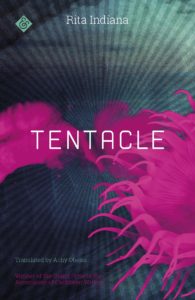 Rita Indiana, Tentacle
Rita Indiana, Tentacle
Rita Indiana is a Dominican writer living in Puerto Rico who was directly impacted by Hurricane Maria. It comes as little surprise, then, that Tentacle takes up the issue of climate change as well as colonialism and racial and economic inequality. At the center of this story are a magical sea anemone and a badass transgender protagonist. With its graphic depictions of sex and violence, the novel reads like an underground cult classic—but it should really be read by the mainstream. Its lessons are too valuable to be ignored.
–Amy Brady
 Elizabeth J. Coleman, ed., Here: Poems for the Planet
Elizabeth J. Coleman, ed., Here: Poems for the Planet
“This book, Here: Poems for the Planet, contains many beautiful, generous poems and ideas for action,” writes His Holiness the Dalai Lama in the foreword to this collection of 125 poems, including those by Mary Oliver, Robert Hass, Aimee Nezhukumatathil, Ross Gay, W.S. Merwin, Natalie Diaz, and Kimiko Hahn. “It is my heartfelt hope that they will inspire readers who ask themselves, ‘But what can I do?’ to see that there is a way forward – learning to share the earth and its resources, while taking care of it together.” Same!
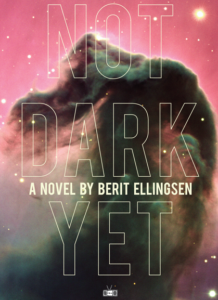 Berit Ellingsen, Not Dark Yet
Berit Ellingsen, Not Dark Yet
Brandon is a city dweller who leaves his boyfriend for a life in the mountains. While there he meets a group of experimental farmers who are attempting to harness the planet’s rising temperatures with aim of increasing food production and combating global hunger. He soon learns, however, that their experiments are unpredictable and irreversible. Not Dark Yet is a novel that speaks to life in the Anthropocene and the ways in which human activity has altered Earth’s natural systems.
–Amy Brady
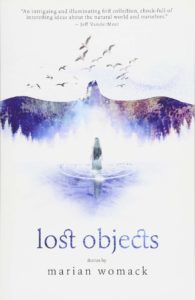 Marian Womack, Lost Objects
Marian Womack, Lost Objects
Womack, a bilingual author, blends fantasy and realism in this weird and wonderful collection of short stories. Set in places around the world, the stories explore what it means to be alive during the Anthropocene, a time when humans have unprecedented influence over the natural world. Here, the natural world fights back with strange animals, monstrous insects, and floods that transfigure civilization as we know it.
–Amy Brady
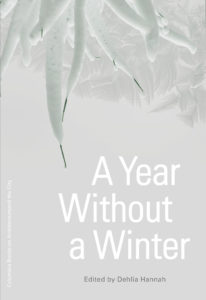 Dehlia Hannah (ed,), A Year Without a Winter
Dehlia Hannah (ed,), A Year Without a Winter
This genre-crossing collection takes as its focus the 1815 volcanic eruption of Mount Tambora that gave rise to unstable weather patterns and climactic changes throughout the nineteenth century. Hundreds of writers, artists, and thinkers responded to the eruptions and its aftermath, including Mary Shelley, with Frankenstein. The collection contains excerpts from the classic novel, as well as other sci-fi stories, historical writings, and illustrations inspired by the eruption. Also included are essays about these works that provide fascinating context.
–Amy Brady
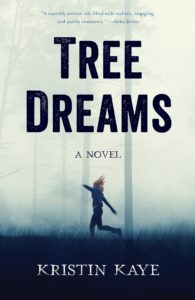 Kristin Kaye, Tree Dreams
Kristin Kaye, Tree Dreams
Tree Dreams is a touching coming-of-age novel about a budding environmentalist, the seventeen-year-old Jade Reynolds. After witnessing a violent incident involving a logger and a tree hugger, the protagonist joins a band of radical environmentalists who live in the forests of Oregon. This is a great read for adults and teenagers alike.
–Amy Brady
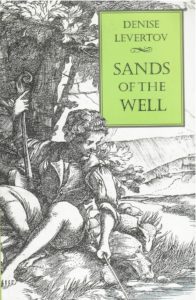 Denise Levertov, Sands of the Well
Denise Levertov, Sands of the Well
Levertov’s characteristically brilliant ode to the landscape of the Pacific Northwest—and our human capacity for awe.
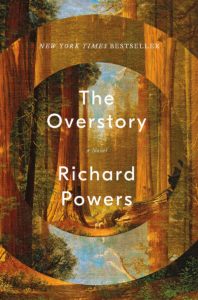 Richard Powers, The Overstory
Richard Powers, The Overstory
The prolific and National Book Award-winning Richard Powers stuns with his twelfth novel, The Overstory, an exquisitely written love letter to trees and how they enrich, protect, and inspire humanity. The novel’s structure is shaped like a tree, and the protagonists, all of them living in different places at different times, are connected by their love of the arboreal.
–Amy Brady
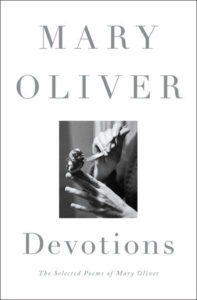 Mary Oliver, Devotions
Mary Oliver, Devotions
Have we ever needed poetry as much as we need it now? The answer is yes—but now is a good time to be reminded of the beauty in the world, to balance all of the tragedies. Devotions: The Selected Poems of Mary Oliver offers the best of the Pulitzer Prize-winning poet’s work. Her writing is deceptively simple, as smooth as stones washed ashore on the beach. But Oliver magnifies the natural world in a way that inspires wonder.
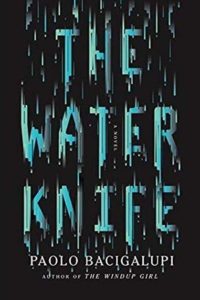 Paolo Bacigalupi, The Water Knife
Paolo Bacigalupi, The Water Knife
The Windup Girl (also on this list) was a far-future dystopia; this is a near-future one, set in a nearly waterless American Southwest, with what resources there are controlled by gangs. It’s a thriller and a work of activist fiction at once.
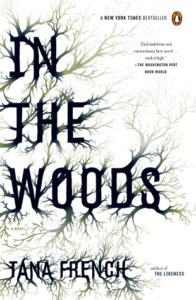 Tana French, In the Woods
Tana French, In the Woods
The first in the Dublin Murder Squad mystery series, an artful blend of procedural and psychological thriller. Most of the action occurs outside the titular woods—it’s more suburb, city, police station—but one thing I enjoyed about the book, besides the high quality writing and inventive plot, is the way a patch of ancient forest weighs in the damaged psyche of the main character. The violent tragedy that made Detective Rob Ryan who he is happened in that forest when he was a child, but he can’t quite remember it. French takes risks here that I admire, especially in leaving the event mysterious—I’m sure that’s why I still can’t shake the menace of what happened to Ryan as a kid. It feels like my own partially-remembered nightmare.
 Emmi Itäranta, Memory of Water
Emmi Itäranta, Memory of Water
Another work of speculative fiction, in which the world has devolved into war over limited water resources, and China now rules Europe. Noria is training to become a tea master, like her father, which would mean she would be privy to certain water-related secrets, but in a changing world, her knowledge is the most dangerous thing of all.
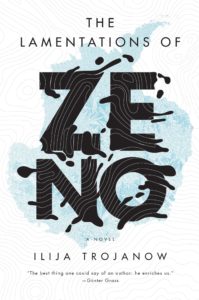 Ilija Trojanow, tr. Philip Boehm, The Lamentations of Zeno
Ilija Trojanow, tr. Philip Boehm, The Lamentations of Zeno
A modernist literary novel, in which a once-idealistic glaciologist bemoans the disintegration of his marriage alongside the melting of the Arctic.
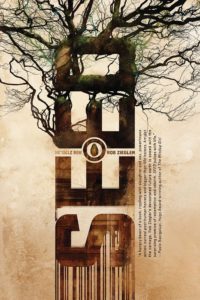 Rob Ziegler, Seed
Rob Ziegler, Seed
In about a hundred years, Seed proposes, the United States will be one enormous dust bowl, its citizens mostly migrants. The only thing keeping those citizens (barely) alive will be a special genetically-engineered seed that requires little water and is produced by a living city/corporation known as Satori.
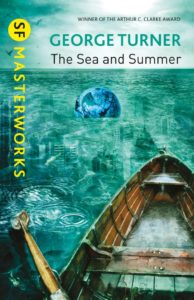 George Turner, Drowning Towers (The Sea and Summer)
George Turner, Drowning Towers (The Sea and Summer)
It’s the year 2041, and things are bad. The seas are high, the high-rises are filled with unemployed “swill,” which are sharply divided from the more affluent “sweet” that make up about a tenth of the population. It’s a pretty plausible preview of what might happen if we continue to let climate change and social inequality rattle on unchecked.
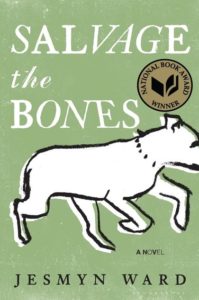 Jesmyn Ward, Salvage the Bones
Jesmyn Ward, Salvage the Bones
Unquestionably the best novel written about Hurricane Katrina so far, and also an American story of struggle and family.
 Mark Martin, ed., I’m With the Bears: Short Stories from a Damaged Planet
Mark Martin, ed., I’m With the Bears: Short Stories from a Damaged Planet
Climate change stories from all your faves, from David Mitchell to Margaret Atwood.
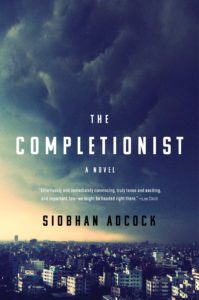 Siobhan Adcock, The Completionist
Siobhan Adcock, The Completionist
A vision of a near future America powered by artificially engineered water, in which everyone is tracked and very few babies are born naturally. An absorbing read for Handmaid’s Tale fans.
 James Galvin, The Meadow
James Galvin, The Meadow
Galvin moves through this novelistic meditation on life in the Colorado high country with a true poet’s eye, taking us through four seasons (and a hundred years) of the eponymous plot of family land, reminding us what it is to live with the beauty and severity of the natural world.
–Jonny Diamond
 Annie Proulx, Barkskins
Annie Proulx, Barkskins
Covering more than three centuries in the lives of two families, one of timber owners, the other of barkskins—as in the workers who do the dangerous work of chopping down trees and getting them to the mill—this gargantuan book is full of bloody, miserable ends. Men are felled by tree, by axe, by river, and by wild animal. It was dangerous work, apparently, ripping up some of the world’s oldest trees, and you get a sense after a few chapters—in which every main character dies, most of them hideously—that Proulx has a feeling or two about how we’ve treated our landscape.
Indeed, while this novel has dozens of human characters, the main one—the one that animates the novel most vividly—is the forest itself. Proulx deftly shows how the idea of dominion over nature that white American settlers arrived with lead to such rampant greed when it came to timber. She tracks how that idea of dominion, once grafted onto capitalism, became an even more deadly, snow-balling force: how capitalism, at its root, is based on the destruction of nature. Ironic given the first trees Proulx describes being hauled down frothy rivers to port are used there to make masts for ships, sea-going ships that create the international trade routes on which capitalism depends today.
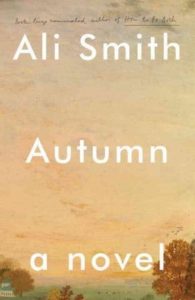 Ali Smith, Autumn
Ali Smith, Autumn
Ali Smith’s riveting Brexit quartet is nearly complete, and in addition to chronicling the end of an era in Britain, it has also said goodbye to the richly demarcated seasons that once carved such distinct personalities through a year in the British Isles. Autumn, of all the books thus far, feels the most poignant in this regard. The book’s fall imagery rises to the surface of seasons and then vanishes in a way that is both eerie and accurate. In many places, we can no longer count on any one week feeling coherently like it is of any season anymore. “Autumn” is the first major novel to capture this dislocation, and it shows what havoc such scrambling of weather causes in the undercurrent’s of our lives.
–John Freeman
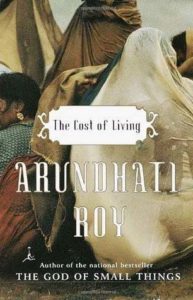 Arundhati Roy, The Cost of Living
Arundhati Roy, The Cost of Living
These two essays, on India’s nuclear race with Pakistan and on its Namrada River Dam project, kicked off Roy’s life as a political essayist in explosive fashion. At a time when India’s economic development and new projection of power was considered yet another miracle, Roy offered this scathing critique of power politics. She also drew a connection so often lacking between displacement of populations for great leaps forward, and the creation of weapons that threaten human existence. “Big Dams are to a Nation’s ‘Development’ what Nuclear Bombs are to its Military Arsenal,” she argued. “They are both weapons of mass destruction. They’re both weapons Governments use to control their own people. Both Twentieth Century emblems that mark a point in time when human intelligence has outstripped its own instinct for survival. They’re both malignant indications of civilisation turning upon itself. They represent the severing of the link, not just the link—the understanding—between human beings and the planet they live on. They scramble the intelligence that connects eggs to hens, milk to cows, food to forests, water to rivers, air to life and the earth to human existence.”
 Terese Svoboda, Great American Desert
Terese Svoboda, Great American Desert
This new short story collection spans thousands of years in the eponymous patch of land, zeroing in at turns on ancient Indigenous characters, wanton polluters, and futuristic prairie folk, all with one eye on the endless use and abuse of our most precious resource, water.
 Forrest Gander, Core Samples from the New World
Forrest Gander, Core Samples from the New World
Combining photography, poetry, and essay, this volume explores China, Mexico, Bosnia-Herzegovina, and Chile with deft attention and care, making it an implicit argument for empathy in a world that too often closes in on itself.
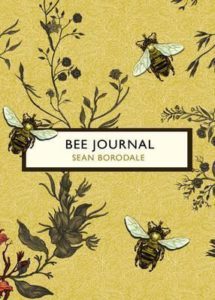 Sean Borodale, Bee Journal
Sean Borodale, Bee Journal
A collection of poems that is also the chronicle of two years in the life of a beehive, written by a novice apiarist in veil and gloves, and a meditation on our place in the natural world and our relationship to those creatures we “keep.”
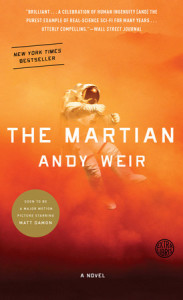 Andy Weir, The Martian
Andy Weir, The Martian
To prepare yourself for having to relocate to Mars—or to survive when Earth begins to resemble the red planet.
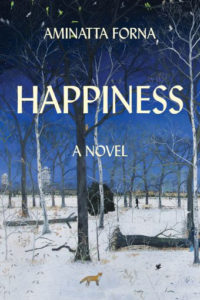 Aminatta Forna, Happiness
Aminatta Forna, Happiness
In which a wildlife biologist studying urban foxes in London must enlist all her fox-scouts on a search for a missing boy.
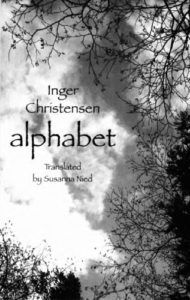 Inger Christensen, tr. Susanna Nied, Alphabet
Inger Christensen, tr. Susanna Nied, Alphabet
One of the best-known works by Denmark’s most prominent poet, a Fibonacci-based poetic sequence about ecological devastation and nuclear threat.
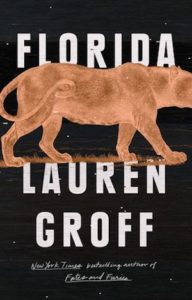 Lauren Groff, Florida
Lauren Groff, Florida
All of the stories in Groff’s latest collection are shot through with anxiety about the environment and climate change—as you might expect for any Florida-centric work. In the final story, a mother “can’t stop the thought that children born now will be the last generation of humans . . . She feels it nearing, the midnight of humanity. Their world is so full of beauty, the last terrible flash of beauty before the long darkness.”
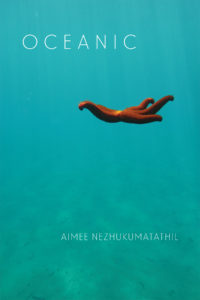 Aimee Nezhukumatathil, Oceanic
Aimee Nezhukumatathil, Oceanic
Nezhukumatathil is one of our greatest living poets of the natural world; in this volume, she chronicles the strange, beautiful, terrible creatures and features of our planet in lines both lush and evocative.
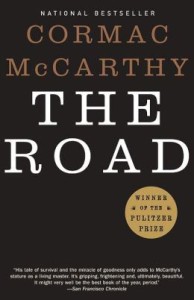 Cormac McCarthy, The Road
Cormac McCarthy, The Road
Everyone’s favorite novel about climate change that isn’t actually about climate change.
 Mohsin Hamid, Exit West
Mohsin Hamid, Exit West
Another novel that is about climate change without actually being about climate change—but in an entirely different way: less wanderers post-apocalypse, more global refugees now. As more and more human beings are displaced—due to climate change or whatever else—this book will only become more essential. “In this world where the whole notion of being a migrant has become incredibly politically charged, is there a way to move beyond this migrant-native dichotomy? Hamid asked in an interview. “Is there a way for us to recognize each other as similarly human? And, if so, how can a story reveal that? That was the starting impulse of the book.”
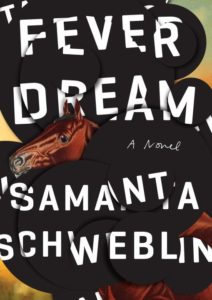 Samanta Schweblin, tr. Megan McDowell, Fever Dream
Samanta Schweblin, tr. Megan McDowell, Fever Dream
Schweblin’s slim, frightening novel is a deft work of eco-horror, imagining the unclear, unknowable fallout from a poisoned world.
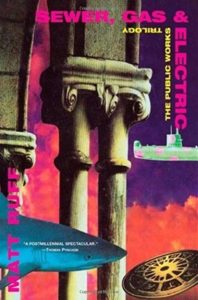 Matt Ruff, Sewer, Gas & Electric
Matt Ruff, Sewer, Gas & Electric
An absurdist speculative novel with an eco-terrorist for a hero.
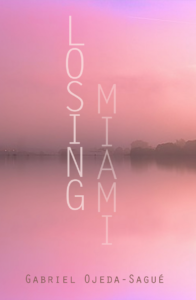 Gabriel Ojeda-Sagué, Losing Miami
Gabriel Ojeda-Sagué, Losing Miami
Ojeda-Sagué calls this book, his third poetry collection, “a bilingual experiment in grieving the potential sinking of Miami due to climate change and rising sea levels. What are we losing if we lose Miami, a seemingly impossible city formed out of Caribbean migration and the transformation of language? This book asks how we cope with loss at such a grand scale, all while the world continues to rapidly change.”
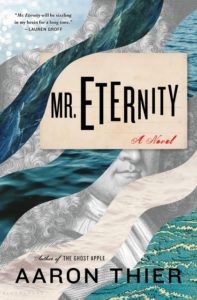 Aaron Thier, Mr. Eternity
Aaron Thier, Mr. Eternity
One of the reasons we can’t quite grasp the enormity of climate change is that we’re stuck in our narrow human lifespans, unable to really grok what thousands or even hundreds of years looks like. In this novel, a couple of climate-conscious filmmakers stumble upon a man who claims to be 560 years old, and we get to hear his oddly comforting millennium-long life story. Everything changes, but some things never do.
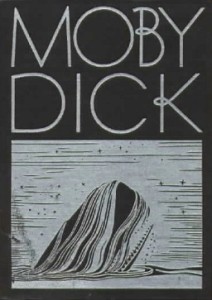 Herman Melville, Moby-Dick
Herman Melville, Moby-Dick
No oceans, no whales, no Great American Novels. (But no really: this novel is, among other things, a wild song to the outdoor life on this insane planet, and therefore deserves its place here and then some.)
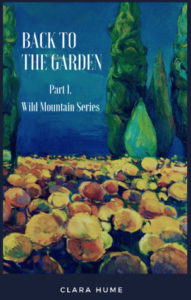 Clara Hume, Back to the Garden
Clara Hume, Back to the Garden
A work of speculative ecofiction that imagines the lives of the last survivors of late-stage capitalism and catastrophic climate change. So basically a realistic novel about our future.
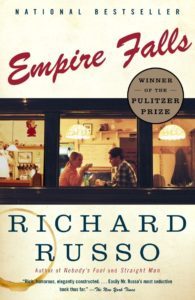 Richard Russo, Empire Falls
Richard Russo, Empire Falls
I know about paper mill towns in Maine, having grown up in one myself, and Russo’s book of such a town’s slow motion demise mirrors the slow motion decay of the environment that the mill pollutes. When big beasts of paper mills were erected in America, they were built on rivers, which were used to harness electricity for propelling the mill. That seemingly synchronistic relationship of Hydro-electric dams impounding water’s natural flow was always out of balance (and still is) because instead of respecting what the water gave us (electricity, paper, birds, fish, swimming holes) we diminished its usefulness by tossing in industrial byproducts of toxic wastes. Lobbyist groups and CEOs (and our current President) continue to defend the indefensible by indicating that American manufacturing is a necessary evil to drive our economy. But there are better solutions that they are too lazy and too cheap to institute. While plumes from effluent pipes grease our river’s water and pollution and particles muddle the sky, we could instead realize, like Russo’s characters eventually do, that the good old days were actually not that good.
–Kerri Arsenault
 Joe Wilkins, Fall Back Down When I Die
Joe Wilkins, Fall Back Down When I Die
Every recent election in America has followed a similar script: progressives and liberals on both coasts support their own kind of candidates, then watch helplessly as red state rage dismantles those candidates, their dreams, and their causes. What few on the coasts seem to realize is that this script is composed, purchased, and paid for.
Joe Wilkins’ 2019 novel, Fall Back Down When I Die, does not talk at us about the flawed script. His characters embody what the script unleashes upon good rural people. In an electric narrative that busts out in a rare poetry when you least expect it (“The line of earth and sky has fouled we are falling through the wolfholes of stars boy we are falling down”), Wilkins climbs inside hard-pressed folk trying to make a life in unforgiving country. He gives us the gutted school budgets and curriculums, the complete lack of opportunity in extraction boom towns on the bust end of the cycle, and a hard-pressed populace desperate to stand true to something, rallying in confusion around the political disinformation machines of Rupert Murdoch, the Koch brothers, the smashmouth ranters of rural radio and Fox News, and the Supreme Court judges who bequeathed our country a pulseless “Corporate Person” that stuffs the mailboxes and media of rural voters full of dark money propaganda so malicious it makes any candidate or cause but Wall Street’s own sound psychotic.
The forces that turned civil discourse into slander, scientific facts into lethal fantasies, law into vigilantism, and Christianity into a totalitarian faith that answers the Gospel call to compassion with private arsenals, did not originate in the red states. The Koch brothers live in New York. The Supreme Court lives in the U.S. capital. Rupert Murdoch is an Aussie.
Fall Back Down When I Die places grey wolves and a victimized rural populace squarely in its sights and shoots both, to my grateful amazement, with profound understanding and compassion. Joe Wilkins’ novel is a rare voice of mercy calling out in the post-Western night.
–David James Duncan
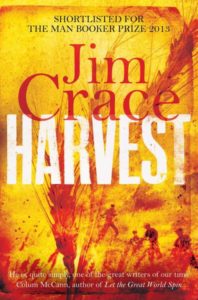
Jim Crace, Harvest
Crace’s 2013 novel is about a change in the land, if not specifically Climate Change, but more importantly, it asks large questions that are sure to figure heavily for humanity in the years ahead. As Rob Nixon identifies them, they are questions like: “How will ordinary people behave when ripped from their mundane routines, cut adrift from comforting old verities? What suppressed capacity for cruelty may surface? What untested gift for improvised survival?”
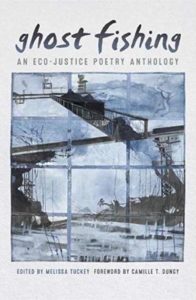 Melissa Tuckey, ed., Ghost Fishing: An Eco-Justice Poetry Anthology
Melissa Tuckey, ed., Ghost Fishing: An Eco-Justice Poetry Anthology
Poet and environmental activist Melissa Tuckey curates this anthology, billed as the first to focus “solely on poetry with an eco-justice bent.” Eco-justice poetry eschews any notion of wilderness as foreign, untouchable, above or below us. The environment is more like a home, a church, even a playmate, and the anthology’s contributors explore themes ranging from disaster displacement and food production, to natural resource extraction and our relationship to animals.
–Aaron Robertson
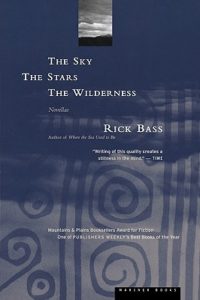 Rick Bass, The Sky, The Stars, The Wilderness
Rick Bass, The Sky, The Stars, The Wilderness
Bass is always excellent at writing people into the wilderness and the wilderness into people—this book, which includes two stories and a novella, is no different. In the title work, a woman considers returns to her ancestral Texas ranch and considers the history of her family on this particular plot of land, and how she may have failed them—indeed the earth itself—by not having children to carry on their legacy.
 J.M. Coetzee, The Lives of Animals
J.M. Coetzee, The Lives of Animals
A metafictional novella in which Coetzee’s alter-ego, Elizabeth Costello, argues against animal abuse. This is followed by responses from actual thinkers Peter Singer, Marjorie Garber, Wendy Doniger, and Barbara Smuts.
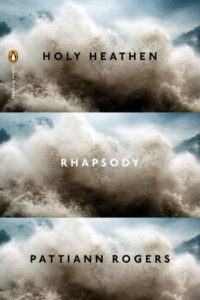 Pattiann Rogers, Holy Heathen Rhapsody
Pattiann Rogers, Holy Heathen Rhapsody
The winner of the John Burroughs Medal for Lifetime Achievement in Nature Poetry, and a book of poems as ferocious as the Earth itself. “If angels were to agree upon a language to describe creation, a tone of voice and a point of view that would adequately celebrate the divine, these would be the poems they would write,” Barry Lopez wrote. “In language that is precise and accurate, with a tenacious heart and a penetrating eye, Pattiann Rogers beatifies. She exposes the dizzying dimensions of earthly space and incants the swoon of physical love. If this is not poetry in service to humanity, I do not know what it is.”
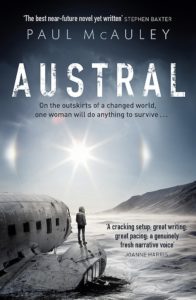 Paul McAuley, Austral
Paul McAuley, Austral
In the near future of McAuley’s novel, the newest nation on Earth has assembled on the now-uncovered Antarctic Peninsula. It’s there that Austral lives, genetically edited to be large enough to withstand the weather, and there that things begin to go wrong.
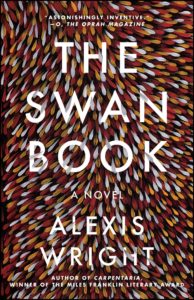 Alexis Wright, The Swan Book
Alexis Wright, The Swan Book
Indigenous Australian author Wright’s third book, set in a climate-ravaged future and focused on the difficult life of a girl led by swans.
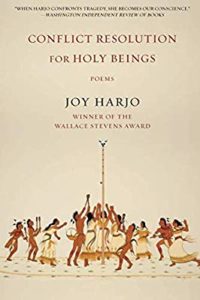 Joy Harjo, Conflict Resolution for Holy Beings
Joy Harjo, Conflict Resolution for Holy Beings
In this collection, Harjo masterfully helps us travel through landscape and it’s hard not to feel such loss but also a glimmer of hope as these poems brace against what it means to listen to the land and to each other.
(from the title poem): “If you sign this paper we will become brothers. We will no longer fight. We will give you this land and these waters “as long as the grass shall grow and the rivers run.
“The lands and waters they gave us did not belong to them to give. Under false pretenses we signed. After drugging by drink, we signed. With a mass of gunpower pointed at us, we signed. With a flotilla of war ships at our shores, we signed. We are still signing. We have found no peace in this act of signing.”
–Aimee Nezhukumatathil
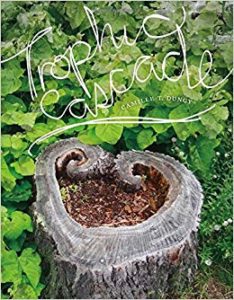 Camille Dungy, Trophic Cascade
Camille Dungy, Trophic Cascade
Dungy writes of the duality of bidding good-bye to loved ones as they pass while also bringing new life into the world in the face of environmental degradation. But these poems go beyond this devastation with such clarity by investigating what it means to have a trophic cascade: how if one animal’s habitat is changed, that causes a tumble of other changes in the animal kingdom– and ultimately how we can try to insist on something like love and tenderness too.
–Aimee Nezhukumatathil
 Hayden Carruth, The Oldest Killed Lake in North America
Hayden Carruth, The Oldest Killed Lake in North America
There are moments occasionally, when confronted with the scale and seeming insolubility of climate change, when all that seems left to do is love the wildness around us as we mourn its passing. As a poet, Hayden Carruth is ideally suited for this late-stage grieving, at once tender, manic, and biblically dire (see below, from his poem “Abandoned Ranch, Big Bend”).
Again and again among the dry
Wailing voices of displaced Yankee ghosts
This ranch is abandoned to terror and the sublime.
The man turns to the woman and child. He has never
Said what he meant. They give him
The steady cool mercy of their unreproachful eyes.
–Jonny Diamond









